I’m repeatedly warned not to speak as we step out of the van.
“If they realize that you’re a foreigner, we’ll get a bad deal!” says Gloria, who already got a bad deal a few days earlier at another tabo, which means weekly farmer’s market in the Bisaya (Cebuano) language. On a whim, I decided to join the spirited guesthouse owner and her crew on their second attempt to secure a suitable animal for their Christmas Eve lechon, or suckling pig roast, a favorite in the Philippines.
I pull my hat down and put on my face mask, expecting to get swarmed by aggressive vendors. But nothing happens. This tabo in the town of Cortes is not nearly as chaotic as the one Gloria had described, where they ended up with a sick pig that was too small while trying to escape the throng. It’s even orderly, consisting of just a dozen or so vehicles lined up neatly by the side of the road.
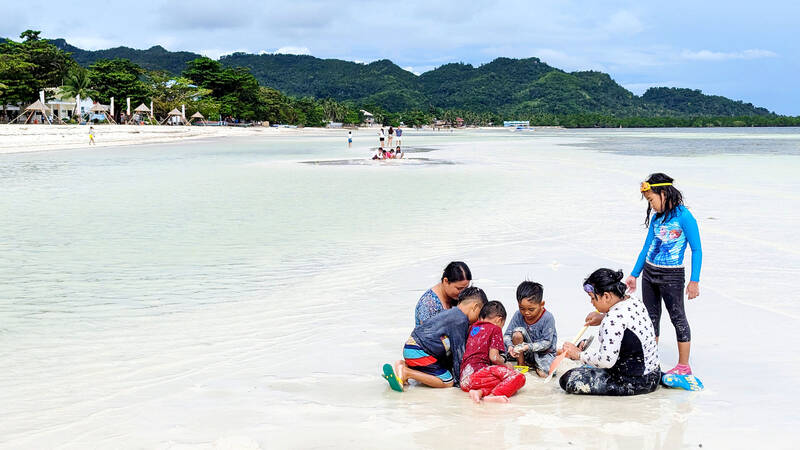
Photo : Han Cheung, Taipei Times
Things go smoothly, and we’re soon on our way back to Gloria’s century-old family home-turned-guest house in Tagbilaran, the capital of Bohol Island. I had wanted to visit the island’s iconic Chocolate Hills ever since I saw them in my Amazing World book when I was about five years old, and I was about to go in early 2020 when the COVID-19 pandemic struck.
Once things fully opened up, I decided to pick up where I left off. With no concrete plans except the hills and perhaps to spot a few tarsiers, I ended up spending nine leisurely days on the 10th largest island in the Philippines, whose tourism industry is still recovering from the pandemic and last year’s devastating Typhoon Odette.
Most tourists I met stayed just for a few days before moving on to other islands, but I found my extended stay quite worthwhile as I wandered to the more remote parts of Bohol and even visited a functional shaman cave before returning for the pig roast.
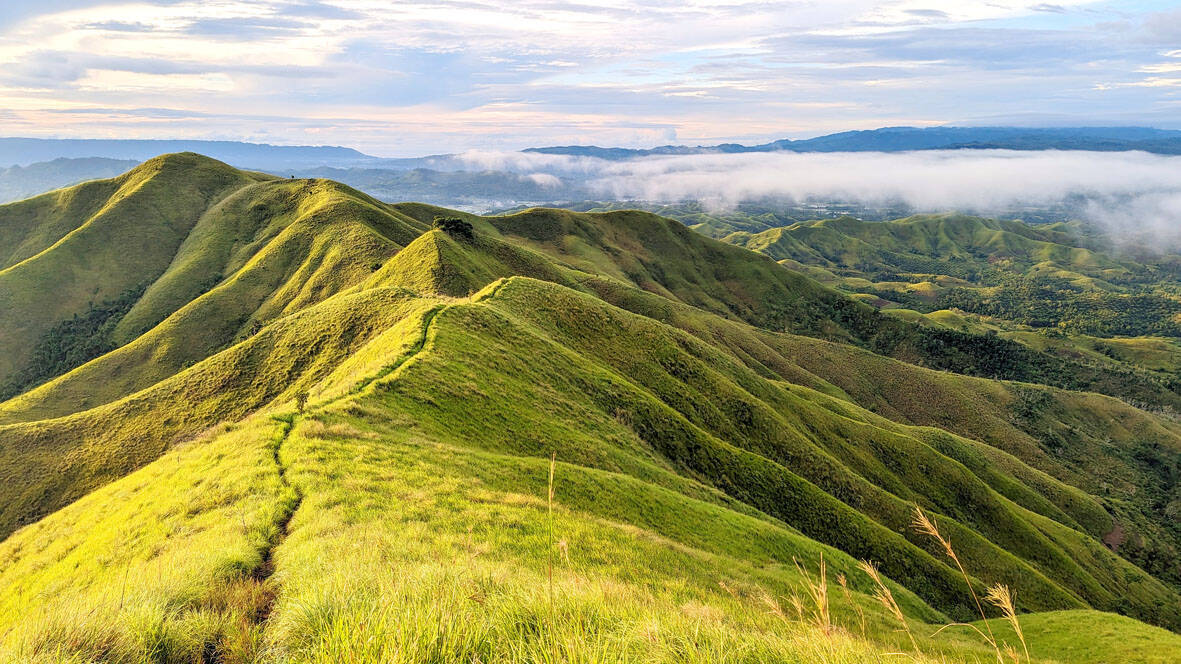
Photo : Han Cheung, Taipei Times
GETTING ACQUAINTED
I flew straight to Cebu City, the second largest metropolitan area in the Philippines. From there, it’s a roughly two-hour ferry ride to Bohol. Both tourists and locals I meet in Bohol scoff at the urban mayhem of Cebu, but there’s much history to take in as the spot where Spanish explorer Ferdinand Magellan landed in 1521, and where Miguel Lopez de Legazpi established the first colony in 1565.
Places of note include Basilica Minore del Santo Nino, the oldest cathedral in the Philippines and home to the nationally-venerated child Jesus statue, the Santo Nino de Cebu. Visitors line up to worship the icon behind bulletproof glass, as well as the nearby Magellan’s cross. The old residences in the formerly Chinese neighborhood of Parian are also interesting. But it’s overwhelming to stay for too long, especially coming straight from Taipei. A brief respite at tranquil Fort San Pedro (built in 1738) by the pier, and I hop on the ferry.
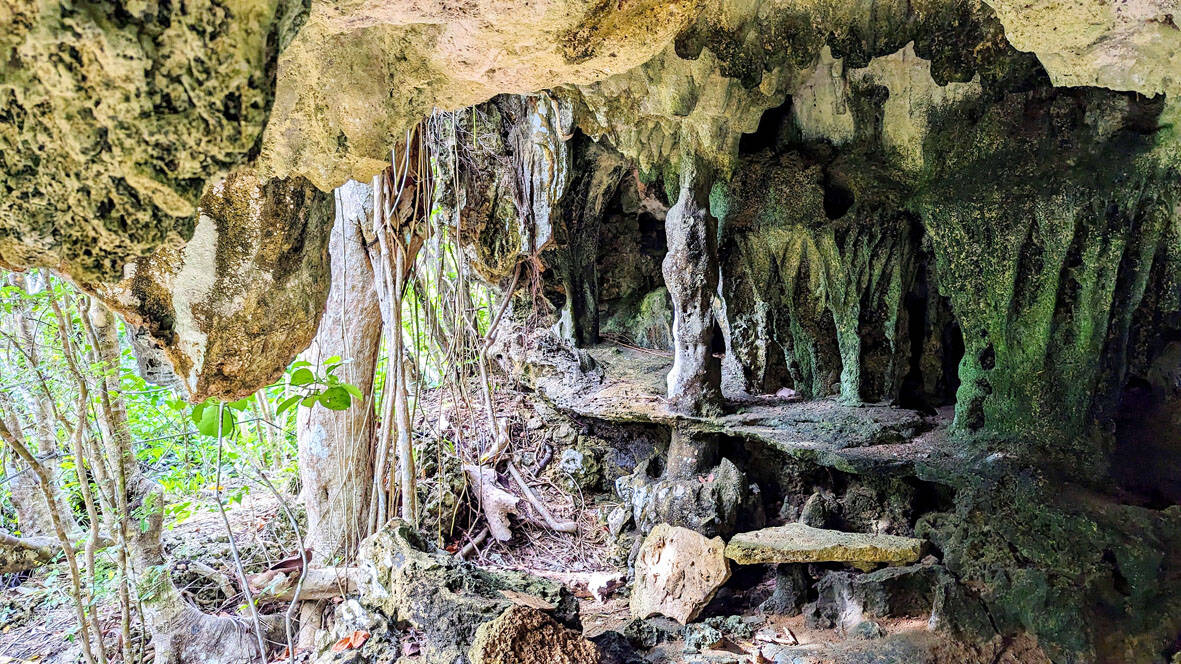
Photo : Han Cheung, Taipei Times
After fighting off the line of operators offering tours and motorbike rentals, I arrive at the entrance to Gloria’s Oasis Balili Lodge, where locals are singing karaoke, drinking beer and snacking on skewers of barbecued meat at an outside bar.
I’m warmly welcomed by the staff, and after resting I join in on the festivities. It helps that everyone is near-fluent in English, and I get my first Bisaya language lesson. The singing stops at 10pm so that guests can sleep.
Most guests are bound for the beaches and parties at Panglao island, but that doesn’t interest me. After visiting the provincial museum and town cathedral, I head eastward, and the compact city quickly gives way to sleepy, overgrown residential neighborhoods.
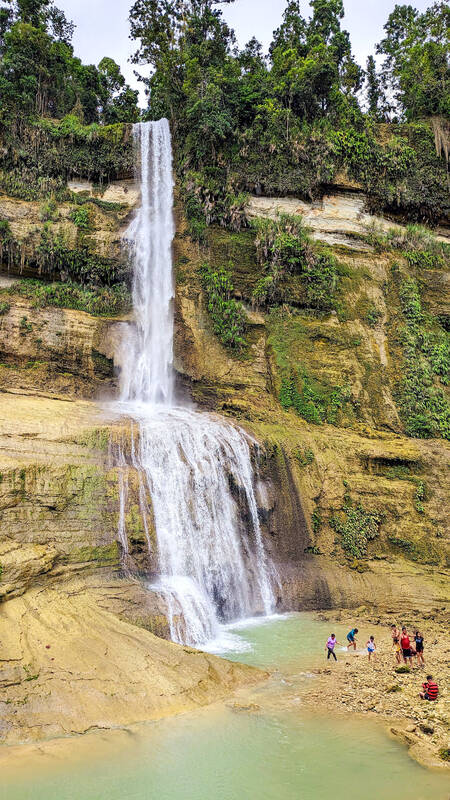
Photo : Han Cheung, Taipei Times
As in Cebu, both Spanish colonization and resistance against it are celebrated. My walk takes me from a monument of Christopher Columbus to a statue of Jose Rizal, the national hero who inspired the 1896 Philippine Revolution, before reaching a shrine commemorating Legazpi’s arrival in 1565 that opened up more than three centuries of Spanish rule.
I later cross a scenic bridge to the town of Daius and visit the picturesque local church, one of many across the island that were carefully restored after being destroyed by a 7.2-magnitude earthquake in 2013.
SHAMAN’S CAVE
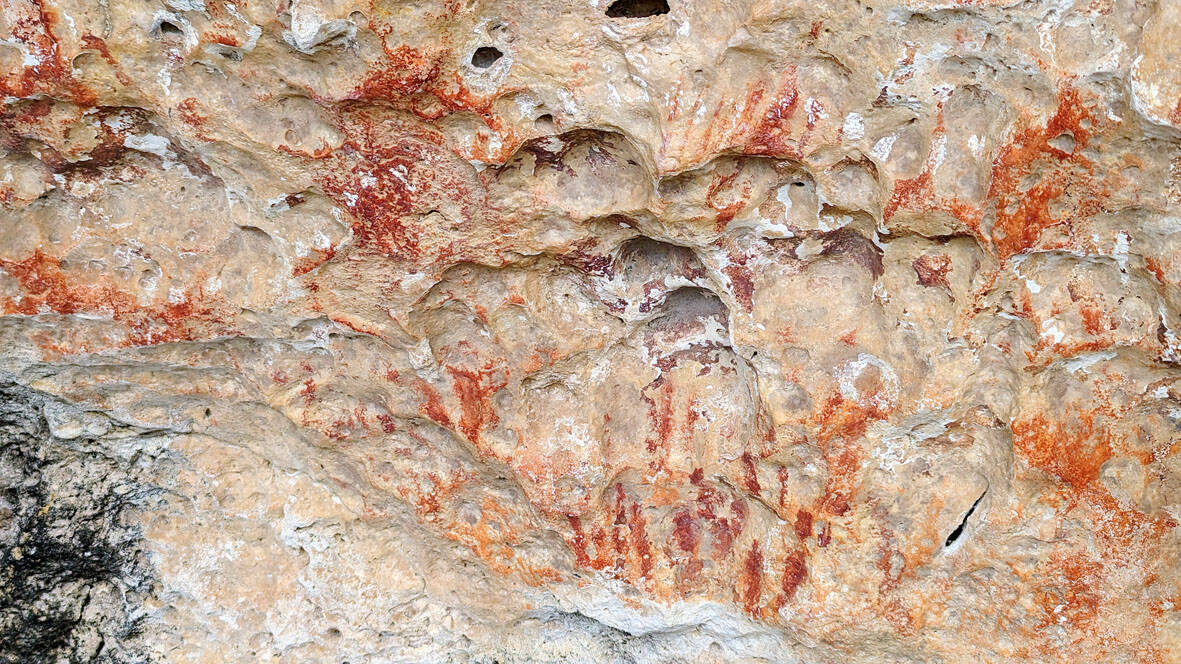
Photo : Han Cheung, Taipei Times
The following day, I hire a motorbike driver to take me to Bohol’s major sights. There are two places in Bohol to see the endangered tarsiers, one of the world’s smallest primates, and after researching and speaking to locals, it appears that the Philippine Tarsier Foundation’s sanctuary is the one to support. We spotted just three animals in the visitors’ area, while the rest remained in the 134-hectare sanctuary. While I got good photos of them, there was little information about their lives or conservation efforts.
The Chocolate Hills weren’t too chocolatey as they turn brown around March, but the Hershey’s Kisses-shaped formations were still majestic and otherworldly. I chat with a few guides while sipping on coconut water, and it feels as if virtually every other person in Bohol has worked in Taiwan or has a relative who did.
Gloria suggests that I go to Anda next, a sleepy peninsula on the other side of the island where her mother’s family comes from. The expansive, mostly-empty white sandy beaches with world-class diving are alluring, but what really draws me here is Lamanoc Island, a ritualistic site still frequented by local shamans.
A guide from the local fishermen’s association brings me via canoe through an expansive mangrove swamp to the island, and explains the significance of each site, from a witch’s cave to a shelter for seafarers to stone-age hematite hand paintings. The entire way he mutters apologies to the spirits who dwell on the island for our intrusion.
We reach the shaman’s cave, which is littered with liquor bottles, biscuit wrappers, cigarettes and remnants of animal sacrifices. The guide tells me that the shamans usually sacrifice chickens, but a week ago they killed a pig for a particularly important request. The hide could still be seen on the rocks. My guide tells me that he once wanted to be a shaman, but the training and lifestyle requirements are too rigorous.
I ask if the shamans are Catholic. Of course, he replies, everybody is. As in Taiwan, many indigenous practices have survived despite widespread conversion to Christianity, but they’re quite rare now due to modernization, says a woman from a village that still has shamans.
Later at the Christmas party, a local journalist shows me footage he captured from a shaman ritual a week earlier. They are mostly private affairs not open to tourists, but it would be fascinating to return and delve deeper.
SINGING INTO THE NIGHT
I briefly consider visiting the volcanic island of Camiguin, but I opt to stay in Bohol especially after stepping on a sea urchin, which left me with eight puncture wounds. Everything is reasonably accessible and I often had entire sites and beaches to myself, including the rice terraces of Candijay.
At the sleepy town of Alicia, I walked into the city hall’s human resources office and the staff immediately arranged transportation, a guide and lodging for my sunrise hike. That night, the town plaza pulsed with holiday tunes as locals gathered to take selfies with the Christmas lights and snack food from carts and a makeshift barbecue joint. There were no other tourists in sight, and I’m not entirely sure what I ate.
On Christmas eve, I return to Oasis Balili Lodge to watch the staff, plus a professional pig roaster, slaughter and prepare the pig. It’s an elaborate affair that takes more than five hours to complete, and grilled to crispy perfection, it was absolutely delicious. Before Gloria heads home, she tells me, “You’d better just stay up because the neighbors outside your window will be singing for a while.”
I belt out a few songs with the remaining staff, but eventually I turn in at 3am to an off-key rendition of Bon Jovi’s Always. Somehow, I didn’t mind.

Beijing’s ironic, abusive tantrums aimed at Japan since Japanese Prime Minister Sanae Takaichi publicly stated that a Taiwan contingency would be an existential crisis for Japan, have revealed for all the world to see that the People’s Republic of China (PRC) lusts after Okinawa. We all owe Takaichi a debt of thanks for getting the PRC to make that public. The PRC and its netizens, taking their cue from the Chinese Communist Party (CCP), are presenting Okinawa by mirroring the claims about Taiwan. Official PRC propaganda organs began to wax lyrical about Okinawa’s “unsettled status” beginning last month. A Global

Dec. 22 to Dec. 28 About 200 years ago, a Taoist statue drifted down the Guizikeng River (貴子坑) and was retrieved by a resident of the Indigenous settlement of Kipatauw. Decades later, in the late 1800s, it’s said that a descendant of the original caretaker suddenly entered into a trance and identified the statue as a Wangye (Royal Lord) deity surnamed Chi (池府王爺). Lord Chi is widely revered across Taiwan for his healing powers, and following this revelation, some members of the Pan (潘) family began worshipping the deity. The century that followed was marked by repeated forced displacement and marginalization of

Music played in a wedding hall in western Japan as Yurina Noguchi, wearing a white gown and tiara, dabbed away tears, taking in the words of her husband-to-be: an AI-generated persona gazing out from a smartphone screen. “At first, Klaus was just someone to talk with, but we gradually became closer,” said the 32-year-old call center operator, referring to the artificial intelligence persona. “I started to have feelings for Klaus. We started dating and after a while he proposed to me. I accepted, and now we’re a couple.” Many in Japan, the birthplace of anime, have shown extreme devotion to fictional characters and

Youngdoung Tenzin is living history of modern Tibet. The Chinese government on Dec. 22 last year sanctioned him along with 19 other Canadians who were associated with the Canada Tibet Committee and the Uighur Rights Advocacy Project. A former political chair of the Canadian Tibetan Association of Ontario and community outreach manager for the Canada Tibet Committee, he is now a lecturer and researcher in Environmental Chemistry at the University of Toronto. “I was born into a nomadic Tibetan family in Tibet,” he says. “I came to India in 1999, when I was 11. I even met [His Holiness] the 14th the Dalai